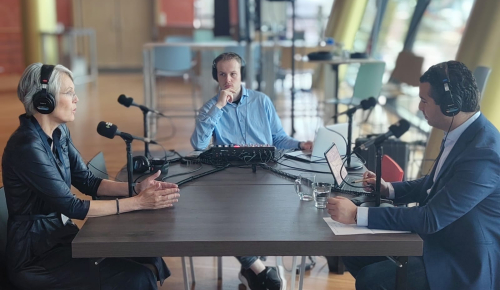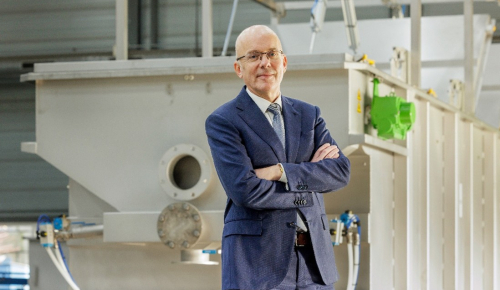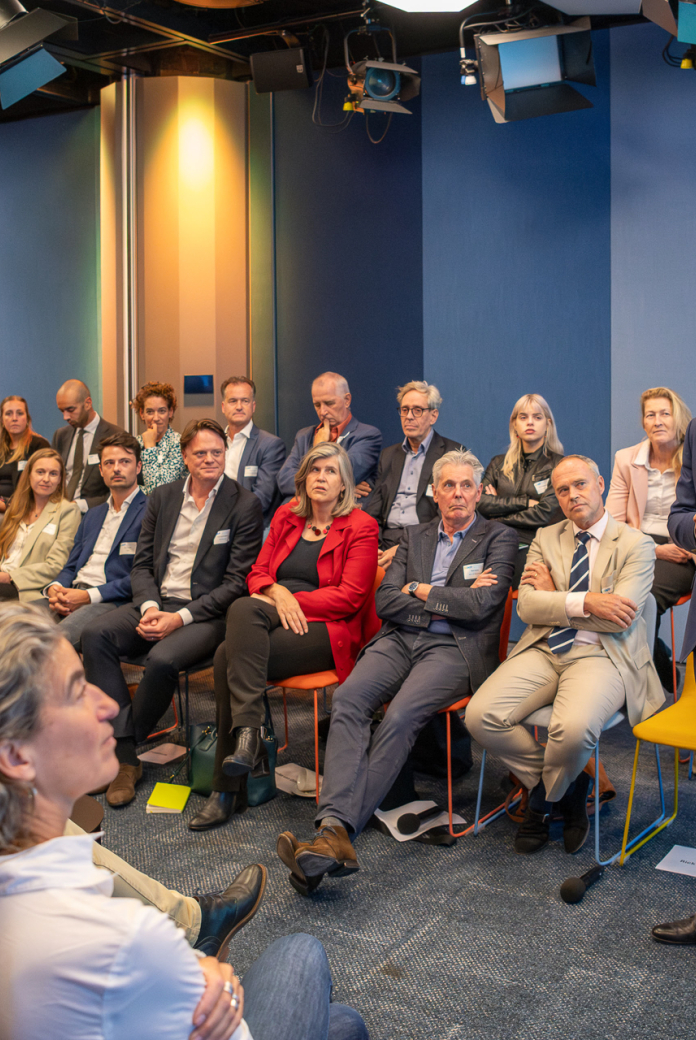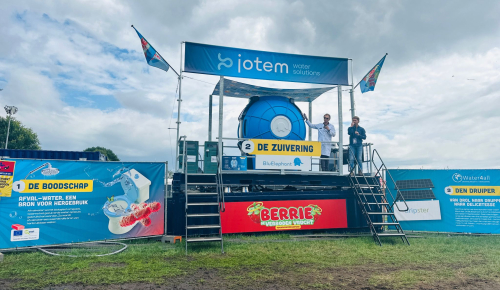News
6 February 2025Promising underground purification system using activated carbon: 'A breakthrough for the drinking water sector'


Field trials at WML Limburgs Drinkwater show that infiltrating activated carbon into the soil effectively removes organic micropollutants. “Moreover, the removal of these substances continues longer than you would expect from adsorption alone,” says Birgitta Putters of WML. “Microorganisms may be breaking down the pollutants. This sustainable and long-lasting effect makes me particularly enthusiastic about this innovative technique.”
With a background in soil remediation, Putters explains that activated carbon has often been used to remove organic micropollutants from soil. “However, for the drinking water sector, where concentrations are much lower, this is a first.” The recently completed TKI project investigated whether the aquifer around a well could be treated by creating a reactive zone using activated carbon. Putters explains that “In theory, this would eliminate the need for above-ground purification. The technique can be applied to individual wells, so if one part of the well field gets contaminated while the rest remains clean, purification can be done underground at the particular site rather than after all the water has been mixed above ground. This is far more efficient.”
Ageing groundwater
Putters, a co-initiator of the project, explains why WML is working on innovations in groundwater purification. “We are dealing with ‘ageing’ groundwater, meaning that organic micropollutants are appearing in more and more locations. These are often at levels well below drinking water standards, making above-ground purification unnecessary. As we want the water to be as clean as possible, underground pre-treatment could be an excellent option. This is the first time WML has tested this in practice.”
A five-metre radius
Before infiltrating the activated carbon underground, research into suspending it effectively was conducted. Sonification was used for this purpose as Putters explains. “Ultrasound prevents fine carbon particles from clumping together, which is crucial as clumps could block soil pores and clog the ground. By monitoring wells, we observed that the activated carbon spread within a five metre radius around the well effectively removed organic micropollutants. Initially, we aimed for a 25 metre radius, but as the aquifer consisted of layers of both coarse and fine sand, this caused clogging in the finer layer.”
New insights
While clogging could have been a setback, it was turned into a learning opportunity, as is often the case in TKI projects. “We developed a method to prevent activated carbon from adhering to soil particles, keeping it mobile,” says Johan van Leeuwen, a researcher at NWP member KWR. “This was successfully achieved using peroxide and hydrochloric acid. We applied these as regeneration agents, restoring the well’s original production capacity after treating the clogging. We managed to pump out the clogged particles while leaving the active particles behind to continue purification. These trials enabled us to create a ‘rule of thumb’ regarding the relationship between particle size and soil pore size, knowledge that can be applied elsewhere.”
Microbiological degradation
Putters is delighted with the data on removal efficiency as well as with the insights gained on preparing and infiltrating activated carbon suspensions to prevent clogging. “We investigated this through column tests at KWR,” the geohydrologist explains, “but what is especially promising is the long-lasting effect. We conducted the trial in 2020, expecting to see a breakthrough after one year. However, four years later, pollutants are still being captured. This could indicate microbiological degradation, a key sustainable factor for this innovative technique. After all, you don’t want pollutants accumulating in the ground. Further research is needed to understand the role of microorganisms and how their effect can be enhanced. We are working with KWR to establish a new TKI project proposal to explore this.”
Showcasing innovation
Norit, a project partner, also sees potential in using activated carbon for underground purification in drinking water production. Helmert van Rheenen, from this Dutch company that has produced activated carbon for over 100 years, explains that “The possibility of a long-lasting effect makes this an interesting technology. Few media can remove low concentrations of substances from large volumes of water, but activated carbon can. It is robust and tackles all contaminants. Additionally, it can be tailored to specific applications. For the WML well trial, we chose a small particle size distribution to maximise the spread and contact with the surrounding environment. The drinking water sector is increasingly facing contamination challenges, a worrying trend for which we are keen to come up with innovative solutions. Initially, underground purification at well sites may not generate a large business volume, but projects like this allow us to connect with companies looking for a technology partner.”
When asked whether being part of a TKI project serves as a way to present the company, Van Rheenen responds positively. “Being part of it brings us knowledge and opportunities for market development and positioning. If this technique is adopted in practice, we hope our efforts will position us as the go-to business partner.”
Being part of the project brings us knowledge and opportunities for market development and positioning. If this technique is adopted in practice, we hope our efforts will position us as the go-to business partner.
Helmert van Rheenen
Norit Activated Carbon
Bringing innovation to maturity
Van Leeuwen and Putters also highlight the value of the TKI consortium. “It makes developing new concepts financially feasible,” says Van Leeuwen. “And I believe it reduces the risk of failure. By bringing together different disciplines, TKI avoids tunnel vision. The likelihood of overlooking something is lower than when working solely within your own field of expertise.” Putters also sees cross-disciplinary collaboration as a key benefit. “It’s crucial to approach new technology from multiple perspectives. This way, specific challenges can be addressed by the right experts. Of course an organisation must first have the internal support and capacity to invest in new technology like underground purification, but a consortium is essential for bringing innovation to full maturity.”
A TKI consortium makes developing new concepts financially feasible. And I believe it reduces the risk of failure. By bringing together different disciplines, TKI avoids tunnel vision.’
Johan van Leeuwen
Researcher at KWR
Project partners
The project – Underground purification with activated carbon particles: a technique for removing organic micropollutants around groundwater wells – was carried out in collaboration with Bioclear Earth, KWR Water, Norit Activated Carbon, and Waterleiding Maatschappij Limburg (WML).
Source: https://www.tkiwatertechnologie.nl/ (in Dutch)
Featured NWP members: KWR





